Surface Engineering & Coating Technologies for Corrosion and Tribocorrosion Resistance—Volume II
A special issue of Materials (ISSN 1996-1944). This special issue belongs to the section "Corrosion".
Deadline for manuscript submissions: 10 October 2024 | Viewed by 4242
Special Issue Editor
Interests: surface engineering and coating technologies for tribological; corrosion resistance and biomedical applications; characterisation of surface engineered systems; tribology, corrosion and tribocorrosion of surface engineered materials
Special Issues, Collections and Topics in MDPI journals
Special Issue Information
Dear Colleagues,
Corrosion is one of the most damaging and costly material degradation problems in industrial settings. It leads to economic losses equivalent to 3–4% of the GDP of an industrialised country every year. Many materials derive their corrosion resistance from passivity, i.e., the formation of a passive film at the surface. Any damage to the passive film during service can lead to accelerated corrosion, which in turn can lead to accelerated wear. Thus, tribocorrosion is also a common degradation phenomenon in industry. For decades, efforts have been made to tackle the grave challenges of corrosion and tribocorrosion. Among the many techniques developed, surface engineering and coating technologies are the most effective because material degradation due to corrosion is a surface- and subsurface-related phenomenon.
A surface engineering and coating system is a composite system comprising the surface layer, the subsurface zone and the substrate. Through the proper design and implementation of the surface coating, subsurface and substrate as a system, the corrosion and tribocorrosion resistance of engineering materials can be considerably enhanced. Significant progress has been made in this respect. This Special Issue aims to bring together the latest developments in this technologically and economically important area, compiling unique advances in coating development, corrosion and tribocorrosion characterisation and industrial applications.
It is my pleasure to invite you to submit a manuscript for this Special Issue. Contributions from academic research, application-oriented research and industrial field studies are welcome, and may take the form of full papers, communications and reviews.
Prof. Dr. Yong Sun
Guest Editor
Manuscript Submission Information
Manuscripts should be submitted online at www.mdpi.com by registering and logging in to this website. Once you are registered, click here to go to the submission form. Manuscripts can be submitted until the deadline. All submissions that pass pre-check are peer-reviewed. Accepted papers will be published continuously in the journal (as soon as accepted) and will be listed together on the special issue website. Research articles, review articles as well as short communications are invited. For planned papers, a title and short abstract (about 100 words) can be sent to the Editorial Office for announcement on this website.
Submitted manuscripts should not have been published previously, nor be under consideration for publication elsewhere (except conference proceedings papers). All manuscripts are thoroughly refereed through a single-blind peer-review process. A guide for authors and other relevant information for submission of manuscripts is available on the Instructions for Authors page. Materials is an international peer-reviewed open access semimonthly journal published by MDPI.
Please visit the Instructions for Authors page before submitting a manuscript. The Article Processing Charge (APC) for publication in this open access journal is 2600 CHF (Swiss Francs). Submitted papers should be well formatted and use good English. Authors may use MDPI's English editing service prior to publication or during author revisions.
Keywords
- surface engineering
- coatings
- corrosion
- corrosion protection
- tribocorrosion
- corrosive wear
- electrochemistry
- subsurface






